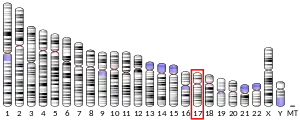| COASY | |||||||||||||||||||||||||||||||||||||||||||||||||||
|---|---|---|---|---|---|---|---|---|---|---|---|---|---|---|---|---|---|---|---|---|---|---|---|---|---|---|---|---|---|---|---|---|---|---|---|---|---|---|---|---|---|---|---|---|---|---|---|---|---|---|---|
| |||||||||||||||||||||||||||||||||||||||||||||||||||
| Identifiers | |||||||||||||||||||||||||||||||||||||||||||||||||||
| Aliases | COASY, DPCK, NBIA6, NBP, PPAT, UKR1, pOV-2, Coenzyme A synthase, PCH12 | ||||||||||||||||||||||||||||||||||||||||||||||||||
| External IDs | OMIM: 609855 MGI: 1918993 HomoloGene: 11889 GeneCards: COASY | ||||||||||||||||||||||||||||||||||||||||||||||||||
| |||||||||||||||||||||||||||||||||||||||||||||||||||
| |||||||||||||||||||||||||||||||||||||||||||||||||||
| |||||||||||||||||||||||||||||||||||||||||||||||||||
| |||||||||||||||||||||||||||||||||||||||||||||||||||
| |||||||||||||||||||||||||||||||||||||||||||||||||||
| Wikidata | |||||||||||||||||||||||||||||||||||||||||||||||||||
| |||||||||||||||||||||||||||||||||||||||||||||||||||
Bifunctional coenzyme A synthase is an enzyme that in mammals is encoded by the COASY gene that catalyses the synthesis of coenzyme A from 4'-phosphopantetheine.[5][6][7]
Function
COASY is an enzyme that catalyzes the last two steps in the synthesis of coenzyme A from vitamin B5 (pantothenic acid). The primary substrate is 4'-phosphopantetheine and COASY is a bifunctional enzyme in this pathway:
- 4′-Phosphopantetheine is adenylated to form dephospho-CoA by the enzyme phosphopantetheine adenylyl-transferase (PPAT; CoaD)
- Next, dephospho-CoA is phosphorylated to coenzyme A by the enzyme dephospho-CoA kinase (DPCK; CoaE)
In mammals this is a single enzyme, but in organisms including yeast and bacteria these enzymes are encoded by separate genes.[8]
Interactions
COASY has been shown to interact with P70-S6 Kinase 1.[9] In 2009, COASY has also been implicated in PI3K signaling, as it was shown to interact with a regulatory subunit of PI3K.[10]
Clinical significance
Loss of function mutations to COASY have been associated with an ultra-rare disease that causes neurodegeneration with brain iron accumulation called COASY protein-associated neurodegeneration (CoPAN), or NBIA6.[8][11][12]
References
- 1 2 3 GRCh38: Ensembl release 89: ENSG00000068120 - Ensembl, May 2017
- 1 2 3 GRCm38: Ensembl release 89: ENSMUSG00000001755 - Ensembl, May 2017
- ↑ "Human PubMed Reference:". National Center for Biotechnology Information, U.S. National Library of Medicine.
- ↑ "Mouse PubMed Reference:". National Center for Biotechnology Information, U.S. National Library of Medicine.
- ↑ Daugherty M, Polanuyer B, Farrell M, Scholle M, Lykidis A, de Crécy-Lagard V, Osterman A (June 2002). "Complete reconstitution of the human coenzyme A biosynthetic pathway via comparative genomics". The Journal of Biological Chemistry. 277 (24): 21431–21439. doi:10.1074/jbc.M201708200. PMID 11923312.
- ↑ Zhyvoloup A, Nemazanyy I, Babich A, Panasyuk G, Pobigailo N, Vudmaska M, et al. (June 2002). "Molecular cloning of CoA Synthase. The missing link in CoA biosynthesis". The Journal of Biological Chemistry. 277 (25): 22107–22110. doi:10.1074/jbc.C200195200. PMID 11980892.
- ↑ "Entrez Gene: COASY Coenzyme A synthase".
- 1 2 Evers C, Seitz A, Assmann B, Opladen T, Karch S, Hinderhofer K, et al. (July 2017). "Diagnosis of CoPAN by whole exome sequencing: Waking up a sleeping tiger's eye". American Journal of Medical Genetics. Part A. 173 (7): 1878–1886. doi:10.1002/ajmg.a.38252. PMID 28489334. S2CID 27153945.
- ↑ Nemazanyy I, Panasyuk G, Zhyvoloup A, Panayotou G, Gout IT, Filonenko V (December 2004). "Specific interaction between S6K1 and CoA synthase: a potential link between the mTOR/S6K pathway, CoA biosynthesis and energy metabolism". FEBS Letters. 578 (3): 357–362. doi:10.1016/j.febslet.2004.10.091. PMID 15589845. S2CID 9916948.
- ↑ Breus O, Panasyuk G, Gout IT, Filonenko V, Nemazanyy I (August 2009). "CoA synthase is in complex with p85alphaPI3K and affects PI3K signaling pathway". Biochemical and Biophysical Research Communications. 385 (4): 581–585. doi:10.1016/j.bbrc.2009.05.102. PMID 19482007.
- ↑ van Dijk T, Ferdinandusse S, Ruiter JP, Alders M, Mathijssen IB, Parboosingh JS, et al. (December 2018). "Biallelic loss of function variants in COASY cause prenatal onset pontocerebellar hypoplasia, microcephaly, and arthrogryposis". European Journal of Human Genetics. 26 (12): 1752–1758. doi:10.1038/s41431-018-0233-0. PMC 6244412. PMID 30089828.
- ↑ "OMIM Entry - #615643 - NEURODEGENERATION WITH BRAIN IRON ACCUMULATION 6; NBIA6". www.omim.org. Retrieved 21 April 2022.
External links
- Human COASY genome location and COASY gene details page in the UCSC Genome Browser.
- Human PPAT genome location and PPAT gene details page in the UCSC Genome Browser.
Further reading
- Maruyama K, Sugano S (January 1994). "Oligo-capping: a simple method to replace the cap structure of eukaryotic mRNAs with oligoribonucleotides". Gene. 138 (1–2): 171–174. doi:10.1016/0378-1119(94)90802-8. PMID 8125298.
- Montagna M, Serova O, Sylla BS, Feunteun J, Lenoir GM (November 1995). "A 100-kb physical and transcriptional map around the EDH17B2 gene: identification of three novel genes and a pseudogene of a human homologue of the rat PRL-1 tyrosine phosphatase". Human Genetics. 96 (5): 532–538. doi:10.1007/bf00197407. PMID 8529999. S2CID 24567366.
- Suzuki Y, Yoshitomo-Nakagawa K, Maruyama K, Suyama A, Sugano S (October 1997). "Construction and characterization of a full length-enriched and a 5'-end-enriched cDNA library". Gene. 200 (1–2): 149–156. doi:10.1016/S0378-1119(97)00411-3. PMID 9373149.
- Aghajanian S, Worrall DM (July 2002). "Identification and characterization of the gene encoding the human phosphopantetheine adenylyltransferase and dephospho-CoA kinase bifunctional enzyme (CoA synthase)". The Biochemical Journal. 365 (Pt 1): 13–18. doi:10.1042/BJ20020569. PMC 1222654. PMID 11994049.
- Zhyvoloup A, Nemazanyy I, Panasyuk G, Valovka T, Fenton T, Rebholz H, et al. (December 2003). "Subcellular localization and regulation of coenzyme A synthase". The Journal of Biological Chemistry. 278 (50): 50316–50321. doi:10.1074/jbc.M307763200. PMID 14514684. S2CID 13307789.
- Beausoleil SA, Jedrychowski M, Schwartz D, Elias JE, Villén J, Li J, et al. (August 2004). "Large-scale characterization of HeLa cell nuclear phosphoproteins". Proceedings of the National Academy of Sciences of the United States of America. 101 (33): 12130–12135. Bibcode:2004PNAS..10112130B. doi:10.1073/pnas.0404720101. PMC 514446. PMID 15302935.
- Nemazanyy I, Panasyuk G, Zhyvoloup A, Panayotou G, Gout IT, Filonenko V (December 2004). "Specific interaction between S6K1 and CoA synthase: a potential link between the mTOR/S6K pathway, CoA biosynthesis and energy metabolism". FEBS Letters. 578 (3): 357–362. doi:10.1016/j.febslet.2004.10.091. PMID 15589845. S2CID 9916948.
- Rual JF, Venkatesan K, Hao T, Hirozane-Kishikawa T, Dricot A, Li N, et al. (October 2005). "Towards a proteome-scale map of the human protein-protein interaction network". Nature. 437 (7062): 1173–1178. Bibcode:2005Natur.437.1173R. doi:10.1038/nature04209. PMID 16189514. S2CID 4427026.
- Oh JH, Yang JO, Hahn Y, Kim MR, Byun SS, Jeon YJ, et al. (December 2005). "Transcriptome analysis of human gastric cancer". Mammalian Genome. 16 (12): 942–954. doi:10.1007/s00335-005-0075-2. PMID 16341674. S2CID 69278.
- Nemazanyy I, Panasyuk G, Breus O, Zhyvoloup A, Filonenko V, Gout IT (March 2006). "Identification of a novel CoA synthase isoform, which is primarily expressed in the brain". Biochemical and Biophysical Research Communications. 341 (4): 995–1000. doi:10.1016/j.bbrc.2006.01.051. PMID 16460672.




